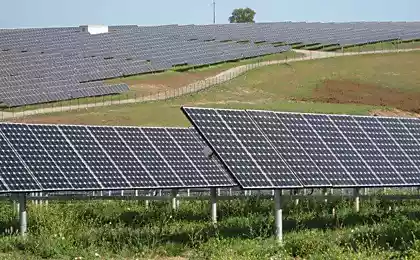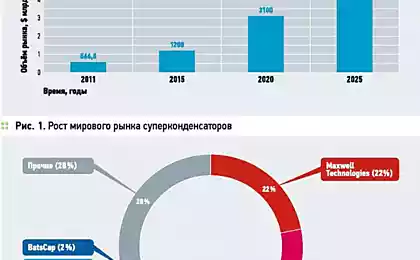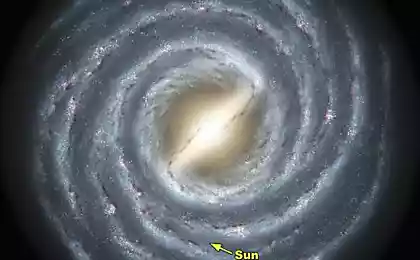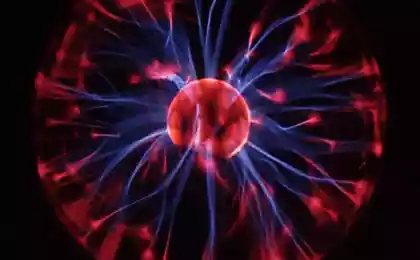426
Hydricity: concept of continuous generation of solar energy using hydrogen
Scientists at Purdue University (USA) proposed a concept called "hydricity" (eng. "vodorodovorot"), the aim of which is to create a sustainable economy that can not only harness solar energy, but also to generate and store hydrogen from superheated water for round-the-clock energy generation.
"The proposed concept is an innovative solution for continuous and efficient production of energy, says Rakesh Agrawal, one of the authors, Professor, School of Chemical Engineering Purdue University. – It provides an excellent opportunity to understand and develop a sustainable economy that would fully meet the requirements of a person in matters of foodstuffs, chemical industry, transport, heating and electricity."Research project implies that the hydrogen can be combined with carbon from agricultural biomasses to produce fuel, fertilizer and other products.
"If you can extract carbon from renewable biomass, you can make anything: electricity, chemicals, heat, food and fuel," notes Agrawal.

In Hydricity uses solar concentrators to focus the sunlight, warming the water to extremely high temperatures, which is further used in electricity generating steam turbines and reactors to split water into oxygen and hydrogen. The latter will go into storage to power the steam turbines during the night or for use in other production processes with zero emissions of greenhouse gases.
"Usually, the production of electricity and hydrogen production are studied separately from each other. But we managed to synergistically integrate these two processes and significantly improve them," — said the Professor.Continuous production involves the production of hydrogen and electricity for light day and the use of oxygen and hydrogen at night. Thus the steam turbine work nonstop and do not require the constant starts and stops. Thus, the interrelated effectiveness of the simultaneous application of the two processes is more than just the total efficiency of these processes taken separately.
The efficiency of the systems concept of Hydricity given 24-hour cycle of operation showed a 35-percent result, which is approximately equal to the efficiency derived from the best modern solar cells with batteries. But unlike electrochemical energy storage systems, thermochemical method to produce hydrogen offers a wider scope of application, its working life is not limited to a certain number of charge cycles and eventually its performance is not reduced, which is characteristic of traditional batteries. published
P. S. And remember, only by changing their consumption — together we change the world! ©
Join us in Facebook , Vkontakte, Odnoklassniki
Source: ecotechnica.com.ua/energy/solntse/547-hydricity-kontsept-bespreryvnoj-generatsii-solnechnoj-energii-s-pomoshchyu-vodoroda.html
"The proposed concept is an innovative solution for continuous and efficient production of energy, says Rakesh Agrawal, one of the authors, Professor, School of Chemical Engineering Purdue University. – It provides an excellent opportunity to understand and develop a sustainable economy that would fully meet the requirements of a person in matters of foodstuffs, chemical industry, transport, heating and electricity."Research project implies that the hydrogen can be combined with carbon from agricultural biomasses to produce fuel, fertilizer and other products.
"If you can extract carbon from renewable biomass, you can make anything: electricity, chemicals, heat, food and fuel," notes Agrawal.


In Hydricity uses solar concentrators to focus the sunlight, warming the water to extremely high temperatures, which is further used in electricity generating steam turbines and reactors to split water into oxygen and hydrogen. The latter will go into storage to power the steam turbines during the night or for use in other production processes with zero emissions of greenhouse gases.
"Usually, the production of electricity and hydrogen production are studied separately from each other. But we managed to synergistically integrate these two processes and significantly improve them," — said the Professor.Continuous production involves the production of hydrogen and electricity for light day and the use of oxygen and hydrogen at night. Thus the steam turbine work nonstop and do not require the constant starts and stops. Thus, the interrelated effectiveness of the simultaneous application of the two processes is more than just the total efficiency of these processes taken separately.
The efficiency of the systems concept of Hydricity given 24-hour cycle of operation showed a 35-percent result, which is approximately equal to the efficiency derived from the best modern solar cells with batteries. But unlike electrochemical energy storage systems, thermochemical method to produce hydrogen offers a wider scope of application, its working life is not limited to a certain number of charge cycles and eventually its performance is not reduced, which is characteristic of traditional batteries. published
P. S. And remember, only by changing their consumption — together we change the world! ©
Join us in Facebook , Vkontakte, Odnoklassniki
Source: ecotechnica.com.ua/energy/solntse/547-hydricity-kontsept-bespreryvnoj-generatsii-solnechnoj-energii-s-pomoshchyu-vodoroda.html
That hides the South Atlantic magnetic anomaly
Fish oil promotes the breakdown of fat cells and weight loss























